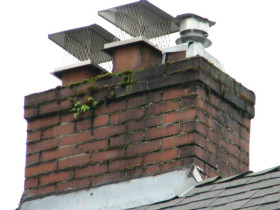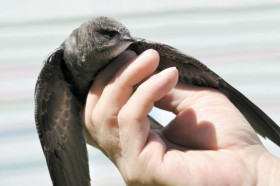The importance of a chimney cap
One of your chimney’s most important components sits at the very top, where you likely don’t see it or think about it. The chimney cap may be out of sight and out of mind, but it plays an important role in protecting your chimney from water damage. As such, it’s important that you make sure your chimney cap is firmly in place and in good repair.
 Your chimney cap wears many hats
Your chimney cap wears many hats
Your chimney cap sits at the very top of your chimney’s flue. In most cases, it is a metal cap attached to the top of your chimney with a wire cage. While a chimney cap’s primary role is to keep water from flowing down the walls of your flue and causing damage to the chimney liner, firebox, damper and other portions of your fireplace and chimney, it actually serves several other purposes as well.
While the top of your chimney cap diverts water and prevents strong downdrafts from entering your chimney, the metal caging that supports it is equally as important. The caging prevents animals and birds from entering your chimney, where they can build nests or become trapped and die. The caging also prevents leaves, twigs and other debris from entering and blocking the chimney. Blocked chimneys can cause all sorts of problems, including improper drafting, a backflow of carbon monoxide and even chimney fires.
The caging also helps to keep things in. Without it, sparks or still burning embers would be able to rise out of your chimney. Those embers can land on your roof or on nearby vegetation and ignite fires.
Know your chimney cap
Because your chimney cap is so important, it is important not to forget about it high upon your rooftop. While most chimneys are fitted with chimney caps, those chimney caps can become dislodged over time, or they can rust or corrode. If your chimney cap is missing, in disrepair, or improperly fitted or installed it can pose a risk to your chimney and your home.
The only real way to know the status of your chimney cap is to visit your roof and inspect it. If you are unable to do so safely, your chimney sweep should inspect your chimney cap during your annual sweeping and inspection. Your sweep should inform you if your chimney cap is missing or in poor condition, and he or she should recommend and be willing to install a replacement if needed. If you are concerned, remember to ask your sweep about your chimney cap before he or she visits your rooftop.
If you need a sweep to inspect your chimney and your chimney cap, call Your Chimney Sweep today! We’ll make sure your chimney cap is in good repair and keeping your chimney safe.

 Your chimney cap wears many hats
Your chimney cap wears many hats